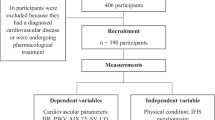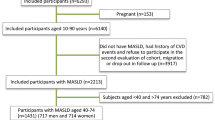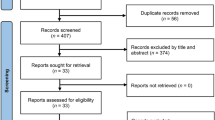Abstract
The Predicting Risk of Cardiovascular EVENTS (PREVENT) equations, created and endorsed by the American Heart Association, provide cardiovascular risk estimates for the general population, but have not yet been tested in multiethnic populations. In the present study, in a large nationwide multiethnic sample of US veterans, the utility of PREVENT to predict the risk of total cardiovascular disease (CVD: fatal and nonfatal myocardial infarction, stroke or heart failure; PREVENT-CVD), atherosclerotic cardiovascular disease (ASCVD: fatal and nonfatal myocardial infarction or stroke; PREVENT ASCVD) and heart failure was evaluated. We assessed the discrimination and calibration performance of ASCVD prediction with PREVENT ASCVD compared with a previous risk-prediction score, pooled cohort equations (PCEs). Among 2,500,291 veterans aged 30–79 years (93.9% men and 6.1% women), 407,342 total CVD events occurred over a median (interquartile range (IQR)) follow-up of 5.8 (IQR = 3.1–8.3) years. The Concordance index (C-index) (95% confidence interval (CI)) for PREVENT-CVD was 0.65 (95% CI = 0.65–0.65) in the overall sample and was similar across different race and ethnic groups (Asian, Native Hawaiian or Pacific Islander, 0.70 (95% CI = 0.69–0.71); Hispanic, 0.70 (95% CI = 0.69–0.70); non-Hispanic Black. 0.68 (95% CI = 0.68–0.69) and non-Hispanic White, 0.65 (95% CI = 0.64–0.65)). C-indices were similar between PREVENT ASCVD and PCEs and ranged from 0.61 to 0.63. Calibration slopes for PREVENT-CVD and -ASCVD in the overall sample were 1.09 (s.e. = 0.04) and 1.15 (s.e. = 0.04), respectively. In contrast, PCEs demonstrated overprediction for ASCVD with a calibration slope of 0.51 (s.e. = 0.06). Calibration slopes for PREVENT and PCEs were similar across race and ethnic groups. Among US veterans, the PREVENT equations accurately estimated CVD and ASCVD risk with some variability across race and ethnicity groups and outperformed PCEs for ASCVD risk prediction.
This is a preview of subscription content, access via your institution
Access options
Access Nature and 54 other Nature Portfolio journals
Get Nature+, our best-value online-access subscription
$32.99 / 30 days
cancel any time
Subscribe to this journal
Receive 12 print issues and online access
$259.00 per year
only $21.58 per issue
Buy this article
- Purchase on SpringerLink
- Instant access to full article PDF
Prices may be subject to local taxes which are calculated during checkout


Similar content being viewed by others
Data availability
Given the privacy restrictions of the VHA data, data used for this analysis are not available for sharing. Source data are provided with this paper.
Code availability
Analytical coding can be shared after request to the corresponding author and after data use agreements have been established. Approved requests will be fulfilled within an agreed upon time frame but not exceeding 90 days from approval of request and signing of data use agreement by all parties.
References
Arnett, D. K. et al. 2019 ACC/AHA Guideline on the Primary Prevention of Cardiovascular Disease: a report of the American College of Cardiology/American Heart Association Task Force on Clinical Practice Guidelines. Circulation 140, e596–e646 (2019).
Wilson, P. W. F. et al. Prediction of coronary heart disease using risk factor categories. Circulation 97, 1837–1847 (1998).
Goff, D. C. et al. 2013 ACC/AHA guideline on the assessment of cardiovascular risk: a report of the American College of Cardiology/American Heart Association Task Force on Practice Guidelines. Circulation 129, 49–73 (2014).
Khan, S. S. et al. Development and validation of the American Heart Association’s PREVENT equations. Circulation 149, 430–449 (2024).
Ndumele, C. E. et al. Cardiovascular-kidney-metabolic health: a presidential advisory from the American Heart Association. Circulation 148, 1606–1635 (2023).
Diao, J. A. et al. Projected changes in statin and antihypertensive therapy eligibility with the AHA PREVENT cardiovascular risk equations. JAMA https://doi.org/10.1001/JAMA.2024.12537 (2024).
Anderson, T. S., Wilson, L. M. & Sussman, J. B. Atherosclerotic cardiovascular disease risk estimates using the predicting risk of cardiovasculardisease events equations. JAMA Intern. Med. 184, 963–970 (2024).
Vimalananda, V. G. et al. Cardiovascular disease risk factors among women veterans at VA medical facilities. J. Gen. Intern. Med. 28, 517–523 (2013).
Fryar, C. D., Herrick, K., Afful, J. & Ogden, C. L. Cardiovascular disease risk factors among male veterans, U.S., 2009–2012. Am. J. Prev. Med. 50, 101–105 (2016).
von Elm, E. et al. The Strengthening the Reporting of Observational Studies in Epidemiology (STROBE) statement: guidelines for reporting observational studies. Ann. Intern. Med. 147, 573–577 (2007).
Collins, G. S., Reitsma, J. B., Altman, D. G. & Moons, K. G. M. Transparent reporting of a multivariable prediction model for individual prognosis or diagnosis (TRIPOD): the TRIPOD statement. Ann. Intern. Med. 162, 55–63 (2015).
Kazi, D. S. et al. Forecasting the economic burden of cardiovascular disease and stroke in the United States through 2050: a presidential advisory from the American Heart Association. Circulation 150, e89–e101 (2024).
Joynt Maddox, K. E. et al. Forecasting the burden of cardiovascular disease and stroke in the United States through 2050—prevalence of risk factors and disease: a presidential advisory from the American Heart Association. Circulation 150, e65–e88 (2024).
Zelniker, T. A. et al. SGLT2 inhibitors for primary and secondary prevention of cardiovascular and renal outcomes in type 2 diabetes: a systematic review and meta-analysis of cardiovascular outcome trials. Lancet 393, 31–39 (2019).
Kristensen, S. L. et al. Cardiovascular, mortality, and kidney outcomes with GLP-1 receptor agonists in patients with type 2 diabetes: a systematic review and meta-analysis of cardiovascular outcome trials. Lancet Diabetes Endocrinol. 7, 776–785 (2019).
Krishnamurthi, N., Francis, J., Fihn, S. D., Meyer, C. S. & Whooley, M. A. Leading causes of cardiovascular hospitalization in 8.45 million US veterans. PLoS ONE 13, e0193996 (2018).
Sussman, J. B., Wilson, L. M., Burke, J. F., Ziaeian, B. and Anderson, T. S. Clinical characteristics and current management of U.S. adults at elevated risk for heart failure using the PREVENT equations: a cross-sectional analysis. Ann. Intern. Med. 178, 144–147 (2024).
Damen, J. A. et al. Performance of the Framingham risk models and pooled cohort equations for predicting 10-year risk of cardiovascular disease: a systematic review and meta-analysis. BMC Med. 17, 109–124 (2019).
Raghavan, S. et al. Optimizing atherosclerotic cardiovascular disease risk estimation for veterans with diabetes mellitus. Circ. Cardiovasc. Qual. Outcomes 13, e006528 (2020).
Vassy, J. L. et al. Estimation of atherosclerotic cardiovascular disease risk among patients in the Veterans Affairs health care system. JAMA Netw. Open 3, e208236 (2020).
Minhas, A. M. K. et al. Comparing cardiovascular risk classification of U.S. adults according to pooled cohort equations and PREVENT equations: cross-sectional analysis of the National Health and Nutrition Examination survey. Ann. Intern. Med. 177, 1444–1448 (2024).
Arnett, D. K. et al. 2019 ACC/AHA Guideline on the primary prevention of cardiovascular disease: a report of the American College of Cardiology/American Heart Association Task Force on Clinical Practice Guidelines. J. Am. Coll. Cardiol. 74, e177–e232 (2019).
Khan, S. S. & Lloyd-Jones, D. M. Statins for primary prevention of cardiovascular disease—with PREVENT, what’s a clinician to do? JAMA 332, 961–962 (2024).
Grant, J. K., Ndumele, C. E. & Martin, S. S. The evolving landscape of cardiovascular risk assessment. JAMA 332, 967–969 (2024).
Baigent, C. et al. Efficacy and safety of more intensive lowering of LDL cholesterol: a meta-analysis of data from 170 000 participants in 26 randomised trials. Lancet 376, 1670–1681 (2010).
Rosario, K. F. et al. Performance of the pooled cohort equations in hispanic individuals across the united states: insights from the multi-ethnic study of atherosclerosis and the dallas heart study. J. Am. Heart Assoc. 10, e018410 (2021).
Jian, J. Z. et al. Validation of the Framingham general cardiovascular risk score and pooled cohort equations in a community-based population: a prospective cohort study analysis 2006–2017. Acta Cardiol. Sin. 39, 879–887 (2023).
Chia, Y. C., Lim, H. M. & Ching, S. M. Validation of the pooled cohort risk score in an Asian population—a retrospective cohort study. BMC Cardiovasc. Disord. 14, 163–169 (2014).
Mantri, N. M., Merchant, M., Rana, J. S., Go, A. S. & Pursnani, S. K. Performance of the pooled cohort equation in South Asians: insights from a large integrated healthcare delivery system. BMC Cardiovasc. Disord. 22, 566–572 (2022).
Bevan, G. H., Freedman, D. A., Lee, E. K., Rajagopalan, S. & Al-Kindi, S. G. Association between ambient air pollution and county-level cardiovascular mortality in the United States by social deprivation index. Am. Heart J. 235, 125–131 (2021).
Torabi, A. J., Von der Lohe, E., Kovacs, R. J., Frick, K. A. & Kreutz, R. P. Measures of social deprivation and outcomes after percutaneous coronary intervention. Catheter. Cardiovasc. Interv. 101, 995–1000 (2023).
Tamura, K. et al. Neighborhood social environment and cardiovascular disease risk. Curr. Cardiovasc. Risk Rep. 13, 7 (2019).
Algren, M. H., Bak, C. K., Berg-Beckhoff, G. & Andersen, P. T. Health-risk behaviour in deprived neighbourhoods compared with non-deprived neighbourhoods: a systematic literature review of quantitative observational studies. PLoS ONE 10, e0139297 (2015).
Hacker, F. M., Phillips, J. M., Lemon, L. S. & Simhan, H. N. The contribution of neighborhood context to the association of race with severe maternal morbidity. Am. J. Perinatol. 41, E2151–E2158 (2024).
Diaz, A., Valbuena, V. S. M., Dimick, J. B. & Ibrahim, A. M. Association of neighborhood deprivation, race, and postoperative outcomes. Ann. Surg. 277, 958–963 (2023).
Kovesdy, C. P. et al. Association of race with mortality and cardiovascular events in a large cohort of US veterans. Circulation 132, 1538–1548 (2015).
Ayala, C. et al. Sex differences in US mortality rates for stroke and stroke subtypes by race/ethnicity and age, 1995–1998. Stroke 33, 1197–1201 (2002).
Sterling, R. A. et al. How did veterans’ reliance on Veterans Health Administration outpatient care change after expansion of the Veterans Community Care Program? Med. Care 60, 784–791 (2022).
Vance, M. C., Wiitala, W. L., Sussman, J. B., Pfeiffer, P. & Hayward, R. A. Increased cardiovascular disease risk in veterans with mental illness. Circ. Cardiovasc, Qual. Outcomes 12, e005563 (2019).
Kwapong, Y. A. et al. Association of depression and poor mental health with cardiovascular disease and suboptimal cardiovascular health among young adults in the United States. J. Am. Heart Assoc. 12, e028332 (2023).
O’Hare, A. M. et al. Trends in the timing and clinical context of maintenance dialysis initiation. J. Am. Soc. Nephrol. 26, 1975–1981 (2015).
Inker, L. A. et al. New creatinine- and cystatin C-based equations to estimate GFR without race. N. Engl. J. Med. 385, 1737–1749 (2021).
Centers for Medicare & Medicaid Services (U.S.) ICD-10-CM Official Guidelines for Coding and Reporting FY 2024—UPDATED October 1, 2023 (October 1, 2023–September 30, 2024) (National Center for Health Statistics, 2023); https://stacks.cdc.gov/view/cdc/133289
van Geloven, N. et al. Validation of prediction models in the presence of competing risks: a guide through modern methods. Br. Med. J. 377, e069249 (2022).
Sutherland, C. et al. Practical advice on variable selection and reporting using Akaike information criterion. Proc. R. Soc. B Biol. Sci. https://doi.org/10.1098/RSPB.2023.1261 (2023).
Burnham, K. P., Anderson, D. R. & Huyvaert, K. P. AIC model selection and multimodel inference in behavioral ecology: some background, observations, and comparisons. Behav. Ecol. Sociobiol. 65, 23–35 (2011).
Steyerberg E. W. Clinical Prediction Models: A Practical Approach to Development, Validation, and Updating (Statistics for Biology and Health) 2nd edn (eds Gail, M. et al.) (Springer, 2019).
Steyerberg, E. W. & Vergouwe, Y. Towards better clinical prediction models: seven steps for development and an ABCD for validation. Eur. Heart J. 35, 1925–1931 (2014).
Acknowledgements
T.M.P.-W. is funded by the Division of Intramural Research of the National Heart, Lung, and Blood Institute and the Intramural Research Program of the National Institute on Minority Health and Health Disparities of the National Institutes of Health (NIH). K.R.T. is supported by NIH research grants (nos. R01MD014712, U2CDK114886, UL1TR002319, U54DK083912, U01DK100846, OT2HL161847, UM1AI109568 and OT2OD032581) and the Centers for Disease Control and Prevention (CDC; project nos. 75D301-21-P-12254 and 75D301-23-C-18264). She has also received investigator-initiated grant support from Travere Therapeutics Inc., Bayer and the Doris Duke Charitable Foundation. J.E.H. is supported by NIH research grants (nos. T32 HL160522, R01 160003 and K24 HL153669). J.C. is supported by NIH grants (nos. 2R01DK100446, 2U01HL096812 and AHA-1258966), co-funded by the Doris Duke Foundation. R.O.M. and J.R. are employees of the US Department of Veterans Affairs. The views expressed in this manuscript are our own and do not necessarily represent the views of the US Department of Veterans Affairs, the National Heart, Lung, and Blood Institute, the National Institute on Minority Health and Health Disparities, the NIH or the US Department of Health and Human Services.
Author information
Authors and Affiliations
Contributions
R.O.M. undertook regulatory approvals, data steward and data acquisition. R.O.M., S.S.K., J.R., C.N. and J.C. were responsible for study inception, the analytical plan, data analysis and preparation of the first draft of the manuscript. All authors thoroughly reviewed and provided critical analysis of the drafts and gave final approval for manuscript submission.
Corresponding author
Ethics declarations
Competing interests
R.O.M., S.S.K., M.S.S., C.N. and T.M.P.-W. declare no competing interests. K.R.T. is supported by NIH research grants and CDC projects. She has also received an investigator-initiated grant support from Travere Therapeutics Inc., Bayer and the Doris Duke Charitable Foundation. She reports consultancy fees from AstraZeneca, Boehringer Ingelheim, Eli Lilly, Novo Nordisk, Travere Therapeutics Inc. and Pfizer and speaker fees from Novo Nordisk. J.E.H. is supported by NIH research grants (see above). D.A. has received speaker fees from Bayer and AstraZeneca. S.B. is a consultant or on the advisory board of Abbott Vascular, Boston Scientific, Medtronic, Amgen, Pfizer, Inari, Truvic and Shockwave. J.C. is supported by NIH grants co-funded by the Doris Duke Foundation (see above). I.J.N. has received speaker fees from Boehringer Ingelheim/Lilly Alliance and Bayer, and is on the consulting or advisory board of Novo Nordisk, Lilly and Boehringer Ingelheim. M.S.V. is an employee of the AHA. J.R. has been a consultant for Boehringer Ingelheim, Bayer and is on the Medical Advisory Board for Procyrion.
Peer review
Peer review information
Nature Medicine thanks Quyen Ngo-Metzger, Boback Ziaeian and the other, anonymous, reviewer(s) for their contribution to the peer review of this work. Primary Handling Editor: Michael Basson, in collaboration with the Nature Medicine team.
Additional information
Publisher’s note Springer Nature remains neutral with regard to jurisdictional claims in published maps and institutional affiliations.
Extended data
Extended Data Fig. 1 Calibration plots of predicted versus observed individual outcomes.
Calibration for the individual components of total cardiovascular disease: (a) non-fatal and fatal coronary heart disease (CHD), (b) non-fatal and fatal cerebrovascular accident (CVD), and (c) non-fatal and fatal heart failure (HF), by race/ethnicity group. AHA PREVENT: American Heart Association Predicting Risk of Cardiovascular Disease EVENTs. Individual data points and error bars are representing mean and standard error of the mean. The individual data points represent the population number within deciles of predicted risk.
Extended Data Fig. 2 Calibration plots of predicted versus observed outcomes for recalibrated equation.
Calibration curves for the recalibrated Predicting Risk of Cardiovascular EVENTs (PREVENT) in the (a) overall population and (b) by race/ethnicity group. Individual data points and error bars are representing mean and standard error of the mean. The individual data points represent the population number within deciles of predicted risk.
Supplementary information
Supplementary Information
Supplementary Tables 1–3 and Fig. 1a,b.
Source data
Source Data Extended Data Tables 1–4
The source data for the Extended Data tables.
Rights and permissions
About this article
Cite this article
Mathew, R.O., Khan, S.S., Tuttle, K.R. et al. Performance of the American Heart Association’s PREVENT risk score for cardiovascular risk prediction in a multiethnic population. Nat Med 31, 2655–2662 (2025). https://doi.org/10.1038/s41591-025-03789-2
Received:
Accepted:
Published:
Issue date:
DOI: https://doi.org/10.1038/s41591-025-03789-2



